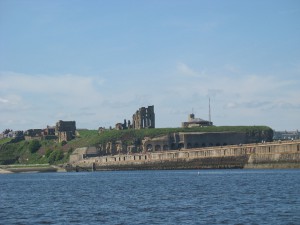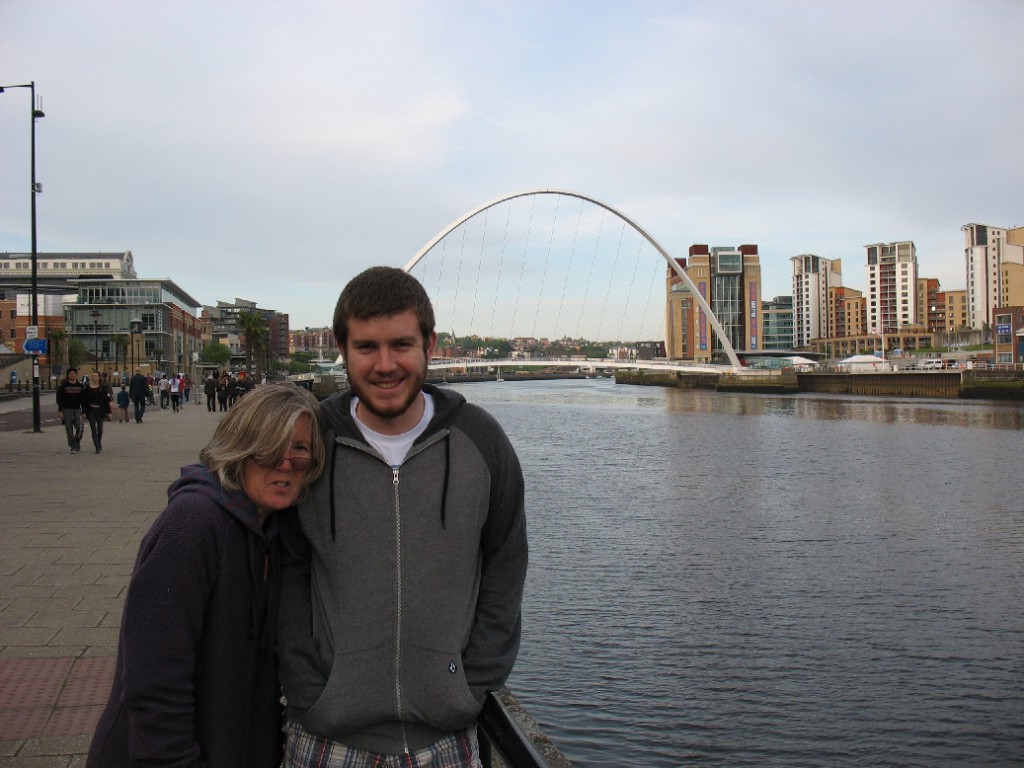Eyemouth to Royal Quays Marina (North Shields) – 64.8 miles in 10 hours and 15 minutes

A lovely passage today. We only managed to sail around half of it as the wind died, but the sun came out and when we were able to sail, it was excellent sailing. We started early – around 4 am and, coming out of Eyemouth, suddenly realised that around half a dozen grey seals were hauled up out of the water on the harbour wall. Given how narrow the entrance to Eyemouth is, we could have just leant over and stroked them. Where is a camera when you need one! We turned straight south and had a lovely westerly 3-4 gusting 5. With full main and two-thirds jib, we had breakfast in England (having crossed the border fairly quickly) and then made a great pace down to Holy Island and the Farne Islands, though we did have to start motoring once we passed Holy Island. From there on, it was straightforward – the navigation was of the ‘keep England on the right‘ variety. We turned into the Tyne around 13.40pm and then pottered down to Royal Quays marina – a Transeurope marina. Anne and Alex joined us an hour or so later and the evening was spent first in North Shields checking out the quality of the fish and chips (high) and then in the centre of Newcastle checking out the quality of the nightlife (low!).
A few hours out of Eyemouth, we went past Lindisfarne or Holy Island. The island has a population of around 180 and is only accessible via a causeway either side of low water, or by boat. Its origins are medieval. The monastery was founded in 634 by St.Aidan and became one of the main bases for Christian evangelising in the North of England. Monks from Iona settled on the island as well. Some of the fame of the island comes from a well-known 1970s folk rock band (best known for the classic Fog on the Tyne), but perhaps more comes from the Lindisfarne Gospels – an illuminated manuscript of the gospels of Mathhew, Mark, Luke and John. The Lindisfarne versions were probably created by Eadfrith who later became the Bishop of Lindisfarne. The gospels are now kept in the British Library in London – something that goes down well with some Northumbrians! Another product of the island is mead. The monks thought that if the soul was in God’s keeping, the body must be fortified with Lindisfarne Mead. Unfortunately the monks didn’t put the recipe in the Lindisfarne gospels and the mead’s recipe is now a secret of the family which still produces it at St.Aidan’s winery.
Directly after Holy Island, we tucked inshore to go through the inshore passage between the Farne Islands and the mainland. There are 15-20 low-lying islands (depending on the state of tide and how you classify an island) and they are now unpopulated except by RSPB wardens for some of the year. St.Aidan and St.Cuthbert both lived there in mediaeval times, and for a while there was an appropriately named ‘cell’ of Benedictine Monks though there were only around 2-6 of them there at any time. The cell was a (minor) casualty of the Dissolution of the Monasteries in 1536. The islands were then owned by various people including the Dean and Chapter of Durham Cathedral, but they are now owned by the National Trust.
One well known story associated with the Farne Islands is that of Grace Darling. She and her father saw the Forfarshire wrecked on one of the Farne Islands and set off in a 21ft coble to try and rescue some of the crew and passengers. They managed to rescue 9 people in two trips, dropping them back at the Longstone lighthouse. Eventually the lifeboat arrived as well, not having been able to put out originally because of the weather, but there were no further survivors to recover. It was too dangerous for the lifeboat to return to Seahouses and so they sheltered along with the Darling family and survivors for three further days until it calmed down sufficiently to return home.

